Acer rubrum
Also known as the scarlet or swamp maple, the red maple has a special place in my heart.
It’s the first plant that I could ever identify, and Acer rubrum was the first botanical name that I ever learned. It marked the beginning of my horticultural career, so writing a guide about it now… it’s all come full circle.
And what a plant, truly! As an ornamental powerhouse, the red maple is easily one of my favorite plants.
The shady foliage, amazing fall color, and unique seed pods all combine to make this a tree I love to see, whether it’s sitting out in nature or placed in somebody’s yard.
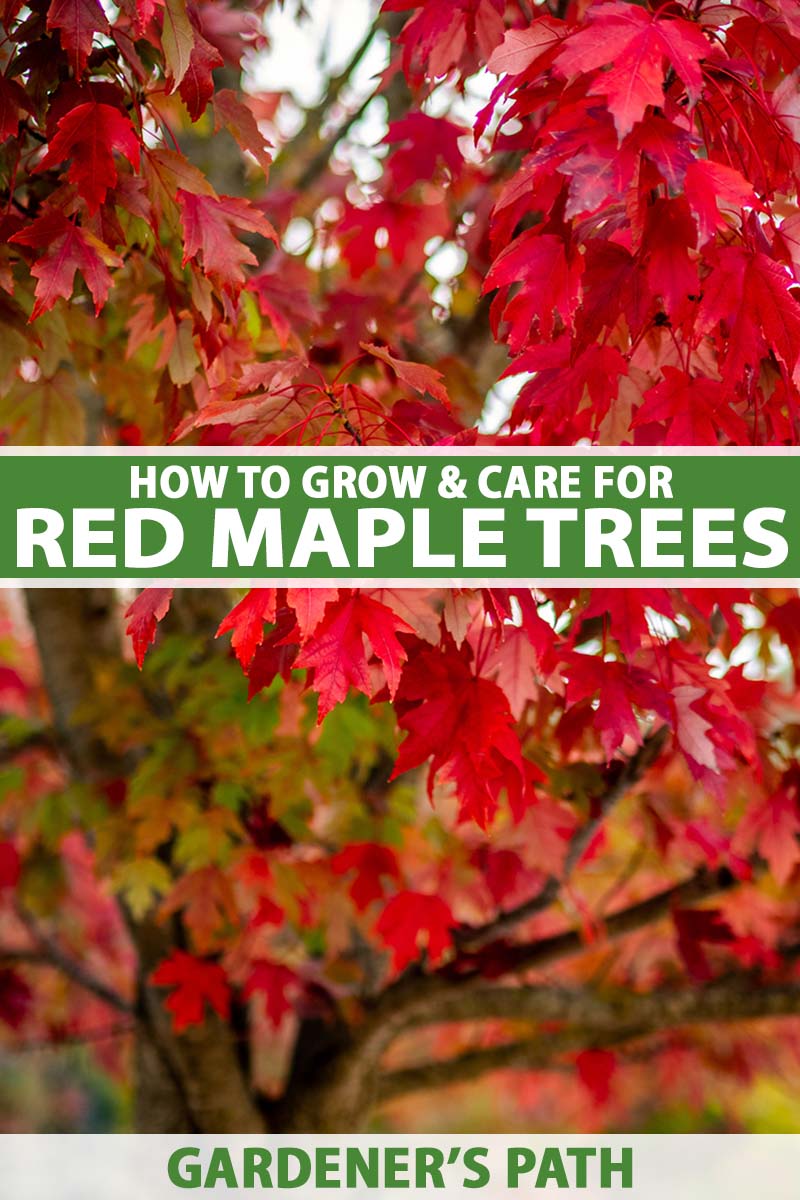
We link to vendors to help you find relevant products. If you buy from one of our links, we may earn a commission.
A. rubrum is one of the most popular ornamental shade trees in the United States, so we thought it best to whip up a little guide for all of you out there who might be interested in planting it.
By the time you’re through reading it, you’ll be ready to grow these incredible plants for yourself!
Here’s what’s coming:
What You’ll Learn
Cultivation and History
Despite the maple’s common association with Canada, A. rubrum also grows abundantly in the United States.
Best cultivated in USDA Hardiness Zones 3 to 9, red maples grow as far north as Newfoundland and as far south as Florida. They can even be found as far west as eastern Texas!

According to the Forest Inventory and Analysis (FIA) forest census conducted by members of the US Forest Service in 2002, this species of Acer is the most common tree found in northern forests in the US of A.
To put this prolific distribution into visual perspective: if the US was an adolescent face and red maple trees were acne, then the entire top half of the continent’s countenance would really need some zit cream.
Eastern Native American tribes were quick to utilize the red maple for both food and medicine. Although not as syrup-y as the sugar maple – A. rubrum yields about half as much sap as A. saccharum – it was still heavily harvested for that sweet, sticky goodness.
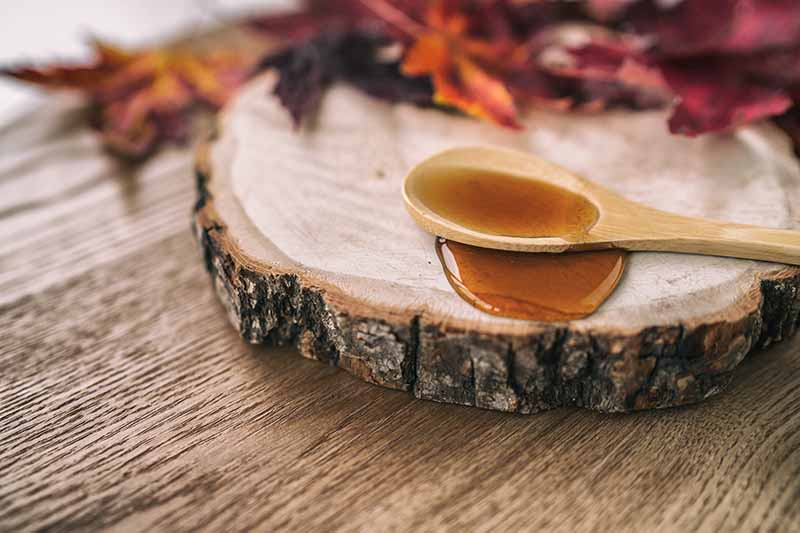
Medicinally, the tree was used as a pain reliever, eyewash, and a way of treating hives. Additionally, the inner bark came in handy as a way of treating coughs and diarrhea.
As European settlers made their way to North America, they adopted many of the natives’ uses for red maple, along with using A. rubrum to make inks and dyes.
They must have liked it enough to send it back home – in 1656, the tree was introduced to the United Kingdom, where it has since become a popular planting for yards and parks.
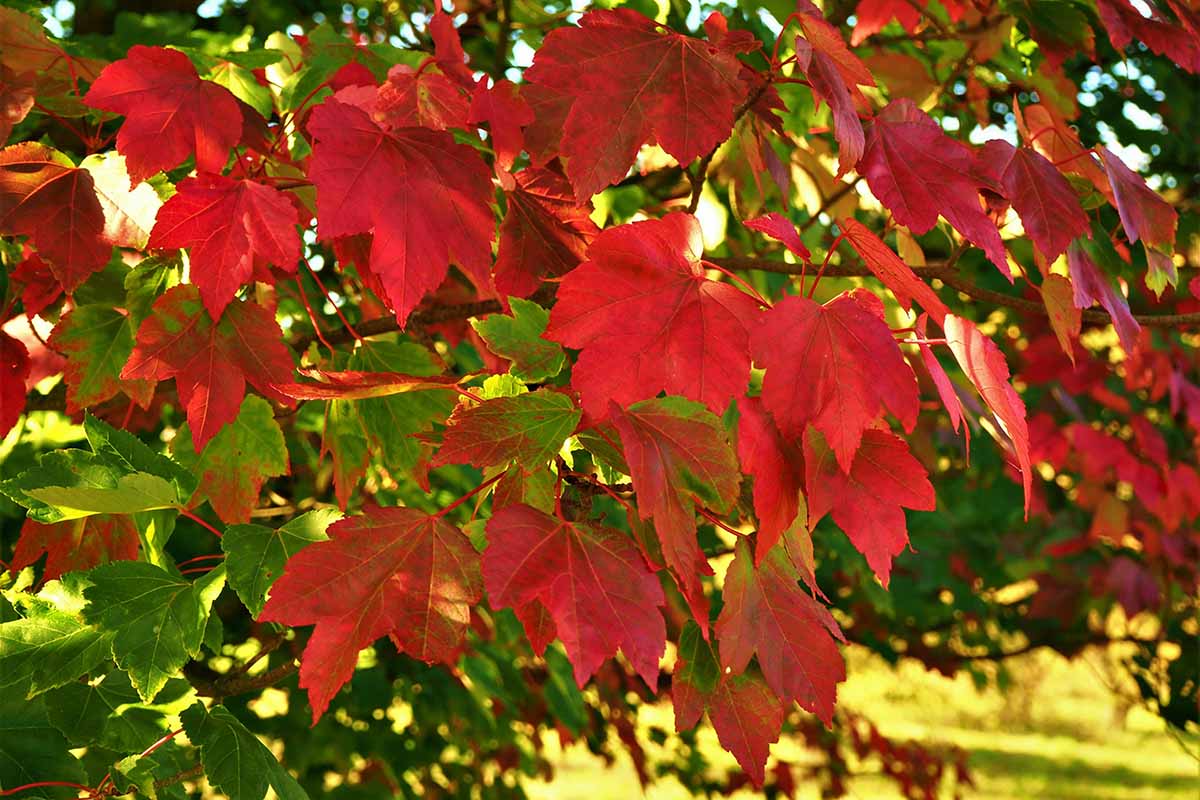
Nowadays, red maple is cultivated for its urban tolerance and striking foliage, the latter of which provides dense shade and offers a beautiful autumnal display once the leaves start to change color.
Ecologically, it is a food source for a wide variety of animals that live within its native range. And with over a hundred cultivars, the red maple has created an entire mini-industry for ornamental plant breeders.
The wood of A. rubrum is used for pulp in papermaking, as well as making furniture and wooden kitchen utensils. It also makes for a rather fine bonsai, believe it or not.
Propagation
Propagating a red maple is best done with seeds, cuttings, or via transplanting.
From Seed
Red maple seeds are housed in propeller-shaped seed pods known as samaras.
These samaras start out red and green, but become tan as they mature in spring or early summer. Once they reach a dry-looking tanness or detach from the tree, the samaras can be harvested.
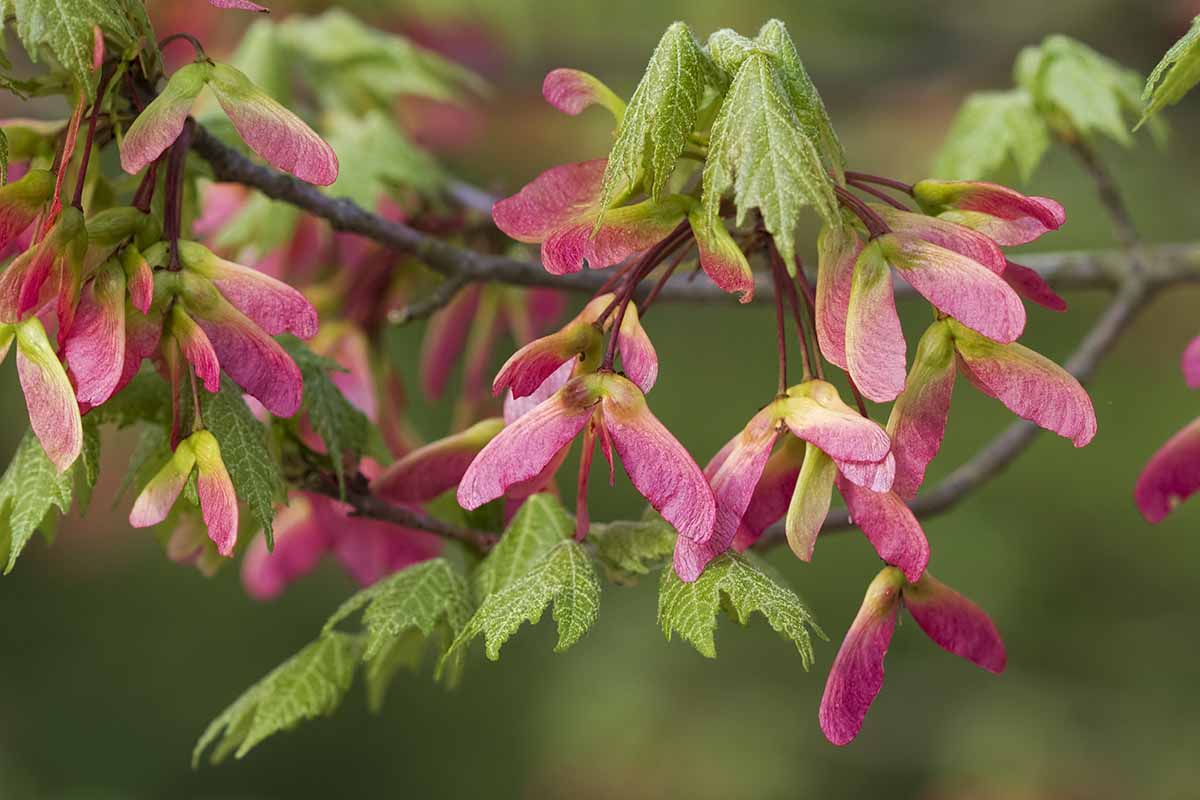
To reveal the seeds within, simply peel back the samara’s flaky exterior. To further confirm ripeness, check that the seeds have turned red, yellow, or brown.
Depending on the cultivar of A. rubrum, the harvested seeds may or may not need stratification.
If the variety that you’re working with necessitates it, sow the seeds a quarter-inch to a full inch deep in moist sand, and refrigerate at 33 to 39°F for 60 to 90 days until they germinate.
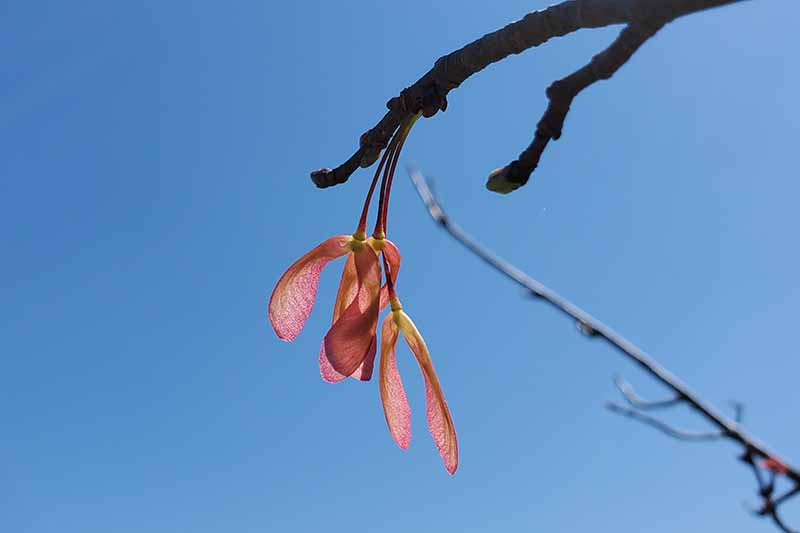
Next, prepare a patch of well-draining and slightly acidic soil somewhere in your garden. Sow 15 to 30 seeds per square foot, all sown a quarter-inch to a full inch deep.
Keep the soil around the seeds moist from the time when they sprout until they become established.
If you wish to start your seeds indoors, prep a well-draining, 1020-sized plastic seed tray by filling it with a growing medium that’s 50 percent sphagnum peat moss and 50 percent perlite. Sow each seed a quarter-inch to a full inch deep.
Keep the substrate moist throughout the whole process.
When the indoor seedlings have a decent root system – test this by giving the seedlings a gentle tug and checking for give – you can start hardening them off by leaving them outside for 30 to 60 minutes one day, then adding that duration every day until they can tolerate a full day’s exposure.
From Cuttings
With a sterilized knife, take a six- to eight-inch-long semi-hardwood cutting in midsummer to early fall.
Defoliate the bottom half of the cutting. Dip the de-leafed end into a rooting hormone, such as this IBA powder sold by Bonide, available from Arbico Organics.
Bonide Bontone II Rooting Hormone
Stick the cutting cut-end-down into a well-draining, 1020-sized plastic seed tray that’s filled with a 50/50 mix of sphagnum peat moss and perlite.
Keep the growing medium moist and place it in an area that’s well-lit, near an adjacent, sun-facing window.
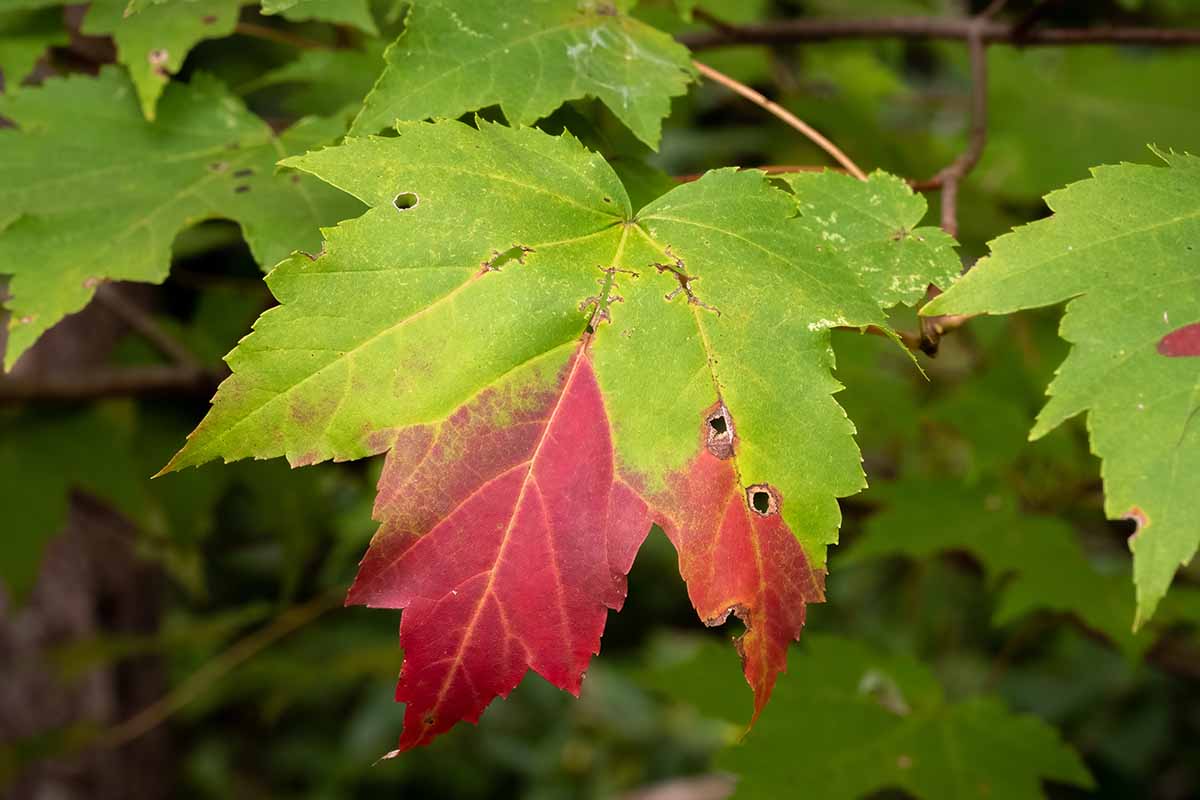
When the cutting has developed an extra set or two of leaves, it’s time to start hardening it off.
On a spring day, begin to harden off rooted cuttings by bringing them outside for 30 to 60 minutes and then bring them back inside. Add another 30 to 60 minutes each day until the cuttings can withstand an entire day’s exposure.
At this point, they’re ready to be transplanted.
Via Transplanting
On an early spring or fall day, prepare a patch of well-draining and slightly acidic soil for every red maple you plan to transplant. These can be nursery specimens, either in containers or balled and burlapped, or cuttings you’ve rooted yourself.
You’ll want to space them out as wide as you’d expect them to spread at maturity so their root systems and/or branches don’t run into physical structures or other plants. For a concrete measurement, 50 feet of spacing is a safe bet.
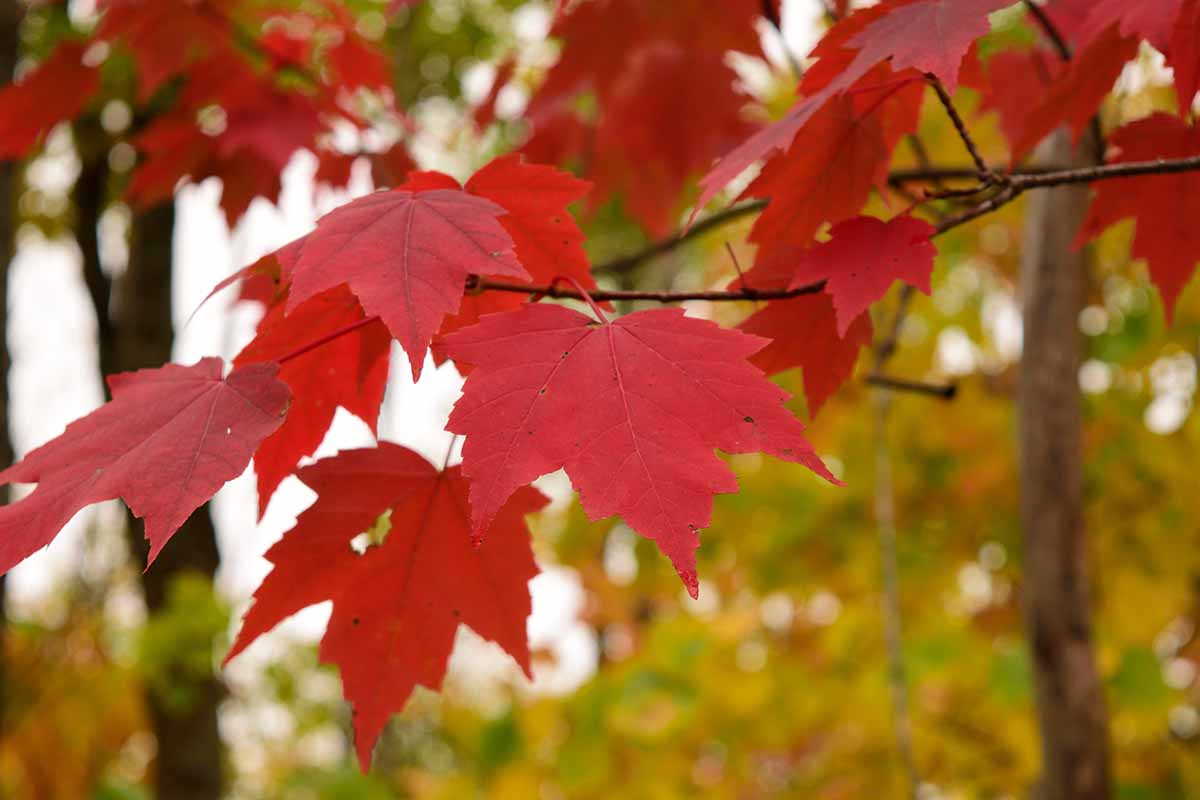
Dig holes that are approximately the depth and width of the transplants’ root systems. Place the transplants in the holes and backfill with adjacent, dug-out soil.
Water them in, and keep the soil around the transplants moist until they become established.
How to Grow
A. rubrum is one tough customer, and this species can grow in a variety of different conditions.
But for peak health, aesthetics, and overall red maple-ness, it’s important to give these plants the conditions that they want, not just what they can tolerate.
Climate and Exposure Needs
These plants need to be grown in USDA Hardiness Zones 3 to 9 in order to thrive. Their moderate heat tolerance gives them a leg up in terms of where it can survive. They also require full sun or partial shade exposure to grow optimally.

Their tolerance for urban conditions make them ideal street trees, as well as plantings in the suburbs.
Soil Needs
As long as the soil is well-draining, a red maple can make do with many different soil textures. But given its ability to hang out in swamps – hence the “swamp maple” moniker – it can actually handle soil saturation.
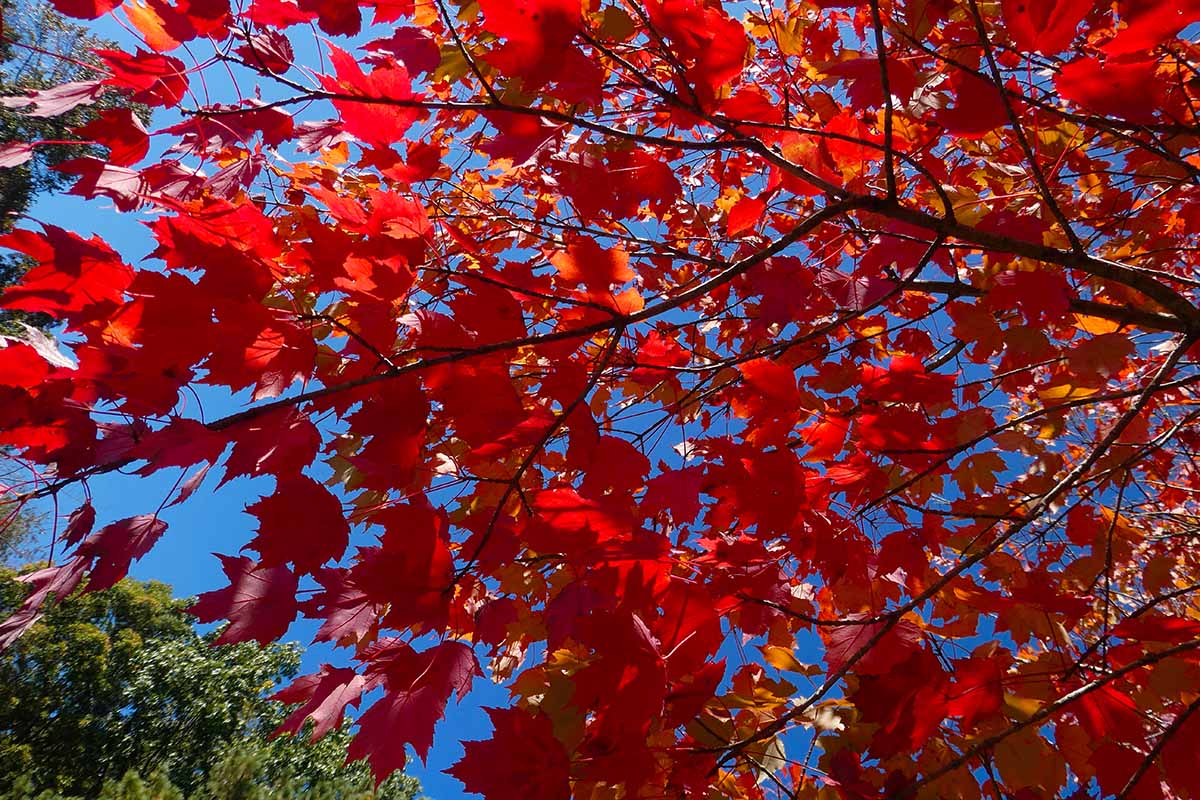
It can also tolerate soil compaction, so don’t worry about needing super aerated soil or anything. High soil fertility will only help a red maple to grow healthy and strong, so avoid barren soil if at all possible.
If you’ve been wondering about the slightly acidic to neutral soil recommendation noted earlier, it’s because red maples are notorious for suffering manganese deficiencies in alkaline soils. Therefore, the ideal soil pH to shoot for is 5.0 to 7.0.
Water and Fertilizer Needs
These plants prefer that their soil is kept moist. But, given that they can tolerate moderate drought once established, occasional less-than-constantly-moist conditions are acceptable – such as allowing the top inch or two of soil to dry before irrigating.
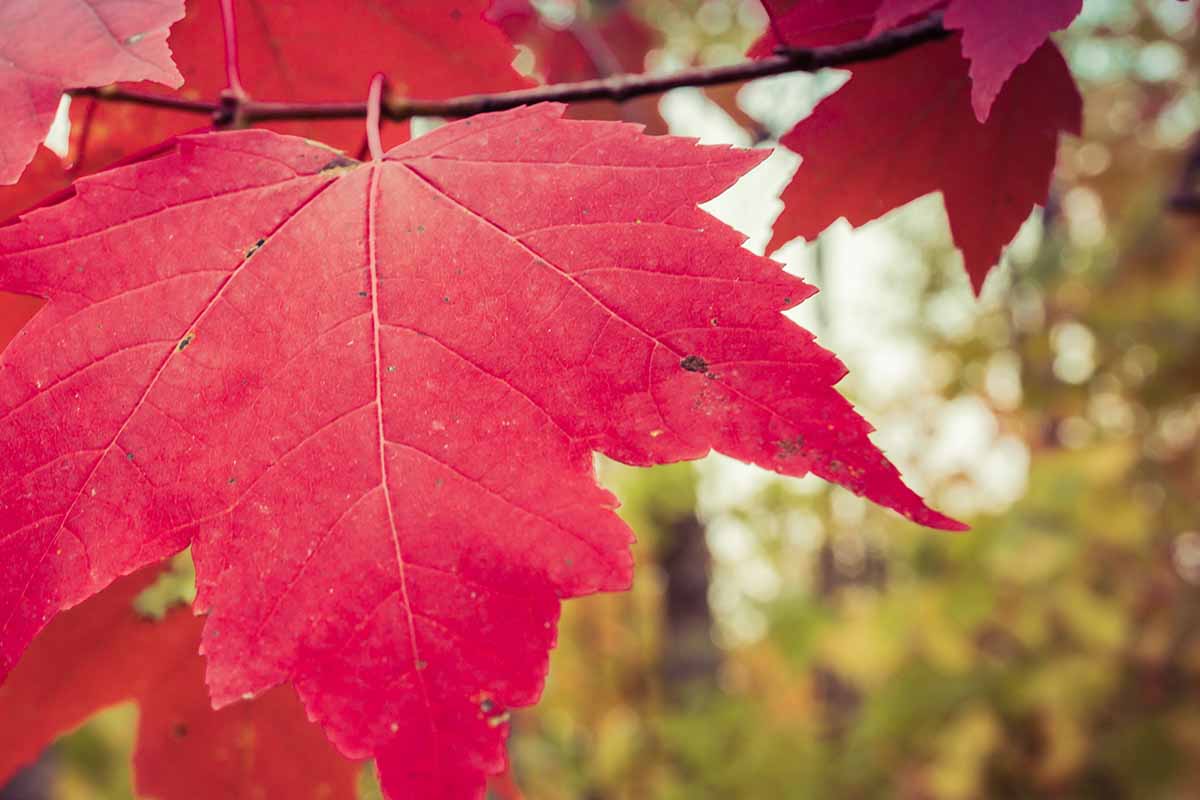
Red maples planted as street trees have increased water needs, thanks to how compacted their roots tend to become when they grow beside or beneath pavement.
Fertilizer-wise, it would be smart to work a few inches of compost or well-rotted manure into the soil above the root zone every spring.
Growing Tips
- Regularly irrigating red maples becomes even more important when they’re planted as street trees.
- For maximum longevity of your trees, keep the soil moist, but ensure that it drains well.
- A pH level above 7.0 will most likely lead to chlorosis due to a manganese deficiency, so plant in neutral to slightly acidic soil.
Pruning and Maintenance
One thing that’s important to know about maples is how shallow their root systems are.
Oftentimes, the surfacemost roots will protrude out of the soil, leaving them vulnerable to structural damage. These exposed roots, combined with the shade cast by the canopy, make it pretty tough to grow aesthetic turf beneath A. rubrum trees.
Adding three to four inches of mulch beneath the canopy solves many of these issues. It protects the roots, conserves soil moisture, and hides what would otherwise be grassless ground.
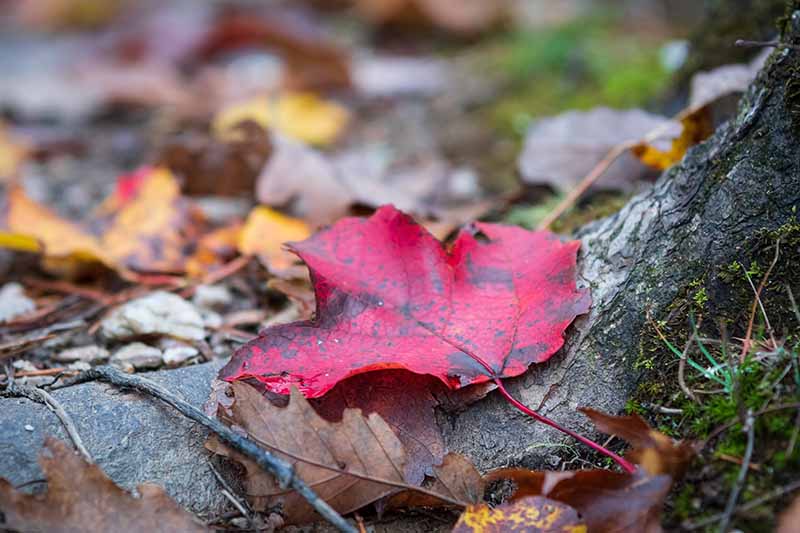
Red maple roots will also girdle the tree on occasion, essentially choking out the trunk and making it difficult for nutrients and water to travel up to the leaves.
These air roots can be found around the root flare, and can be snipped if they begin to encircle the trunk.
To maintain their high and tight growing habit, lowermost branches should be pruned when they start to droop, during your annual primary pruning session.
In the first couple years of growth, maintain a strong central leader by pruning away any competing trunks.
In addition, prune away any branches growing upward at sharp angles – they should ideally be growing outward at around a 90 degree angle from the trunk.

For the more involved tree-shaping sessions of pruning, you actually shouldn’t prune right before that springtime flush of growth like you would with other plants, because maple wounds bleed sap very profusely.
This is great for harvesting syrup, but less so for promoting vigorous springtime growth. For A. rubrum, late summer or early fall pruning is better.
Find more tips on pruning maple trees here.
The soft wood of A. rubrum is prone to damage from storms or mechanical impact, more so than the hardwood maples.
In addition to reducing aesthetics and promoting decay, damaged structures are prime entry points for pests and pathogens. For shoring up these weak links, broken-off branches and other wounded tissues can be pruned whenever you happen to see them.
Volunteer plants will sprout from self-sown seed throughout the spring and summer, so any time you notice seedlings emerging where they don’t belong, give ’em a good yank.
A. rubrum also tends to lose its leaves in either September or October, so be sure to break out the rake or leaf blower around that time!
If the fallen foliage is from a healthy tree that’s free of pests and diseases, feel free to shred the leaves for use as a mulch!
Cultivars to Select
The standard species of red maple is nothing to sneeze at. However, cultivars have been bred solely for displaying a brilliant red awesomeness in the fall, along with some other neat features that may not be found in a plain ol’ A. rubrum.
Covering all of the available red maple cultivars is well beyond the scope of this guide, but here are a few especially notable ones:
Bowhall
Red maples are known for their rounded form, so ‘Bowhall’ really breaks the mold with a narrow, almost columnar growing habit.
Reaching a height of 40 feet and a width of 15 feet, this guy will fit nicely where girthier varieties won’t. Along with red fall foliage, it’s been noted to have yellow-orange leaf shades in autumn, which all flow together in a gradient of fiery color.
Brandywine
Reaching a respective height and spread of 50 feet and 40 feet at maturity, ‘Brandywine’ is a moderately columnar variety that has excellent leafhopper resistance.
With a long-lasting, reddish fall color that borders on purple as the season progresses, this male cultivar won’t drop any pesky samaras that could cause red maples to sprout up where they’re not welcome.
Nature Hills Nursery has ‘Brandywine’ trees in #15 or #25 containers available for purchase.
October Glory
With a rounded, egg-shaped form, and a height and spread of 40 to 50 feet, ‘October Glory’ is named for the month when this tree displays its fall color, and the spectacular fashion with which it does so.
This cultivar holds onto its lustrous green leaves until pretty late in the season, and come October it explodes with various shades of fiery color, ranging from orange-red to plain ’ol red to dark red.
To buy an ‘October Glory’ transplant in your choice of size between one to two and six to seven feet, visit Fast Growing Trees.
Red Sunset
Also known as ‘Franksred,’ Red Sunset® grows to be 50 feet tall and 40 feet wide, and is well-reputed as one of the most attractive cultivars in terms of fall color.
It explodes with brilliant red and orange hues earlier on than most varieties, and even has remarkable winter hardiness, which comes in handy for avoiding bark cracking. An overall knockout.
For a five-foot-tall Red Sunset® maple transplant, visit the great folks over at Fast Growing Trees.
Managing Pests and Disease
A healthy plant wards off annoying pests and pathogens better than an unhealthy one, so make sure you’re caring for your red maples properly. Here are some of the pests and problems you may encounter:
Herbivores
As a whole, herbivores tend to be much cuter than plants, and a starving deer or squirrel tugs at our heartstrings way more than a munched-up plant. We’re human beings with empathy, after all… most of us, at least.
But sometimes – for the sake of our plants – it’s essential that we shove those feelings deep, deep down. As long as our red maples are protected and thriving, then the stomach growls of adorable woodland creatures mustn’t faze us.
Gray Squirrels
Like beavers, gray squirrels need to frequently chew on stuff to keep those chompers sharp, and red maples make perfect chew toys, especially when they’re juvenile saplings.

Additionally, gray squirrels will consume the shoots and samaras if they’re especially famished – neither of which will leave you with an aesthetically pleasing A. rubrum.
Solutions range from leaving a pile of twigs or nuts nearby as a peace offering to using squirrel repellent, such as this product from Gardener’s Supply.
Grandpa Gus Squirrel and Chipmunk Repellent
Younger saplings might also need some mesh fencing placed around them for protection until they develop a more mature size and corresponding toughness.
You can also hang an assortment of shiny things in the trees and/or envelop the trunk in reflective polypropylene wrap to deter their presence.
And if all else fails, you can catch them in traps and release them away from your red maples. This would be a hassle, but it would also be humane.
White-Tailed Deer
Although your mature red maples will be safe from white-tailed deer, A. rubrum saplings are at risk of being eaten by these hungry “Bambi” extras.
Heavy-duty deer fencing like what’s offered by Gardener’s Supply will help deter them along with deep repellent, which is also available at Gardener’s Supply Company.
To learn how to put up a deer fence, read our guide on just that. And for a plethora of general deer prevention tips, check out this guide.
Insects
Creepy-crawly pests can vector diseases between plants as they feed, so by keeping your trees pest-free, you’ll help keep them disease-free, too.
Aphids
Aphids are soft-bodied and translucently green insects that suck sap out of phloem while excreting honeydew.
This honeydew promotes the development of fungal sooty mold and attracts predatory ants, who protect the aphids in exchange for utilizing the honeydew as a food source.
In addition to the structural damage of feeding, getting its sap extracted will lower a red maple’s vigor and health.
Predatory insects such as lacewings and ladybugs feed on aphids, while neem or horticultural oil will kill aphids without destroying your garden’s populations of beneficial insects.
Additionally, strong sprays of water will blast the aphids off of plant surfaces, if you’re looking for a lower-budget option.
Arbico Organics has lacewings for sale, and Monterey horticultural oil is available on Amazon.
Learn more about how to eradicate aphids in our guide.
Borers
“Borer” describes a variety of pests who spend part of their life cycle tunneling into and feeding within the woody structures of plants.
Signs of their presence include bleeding tree sap or excreted, sawdust-looking frass that collects in various plant nooks and crannies.

As borers feed, fed-upon plants will often exhibit foliar discoloration, premature leaf drop, bark cracking, and branch dieback. This grab bag of symptoms reduces a plant’s health and vitality, and could eventually lead to its death.
Borer infestations tend to occur when a plant is stressed, which is prime time for borers to strike. Cultivate your red maples properly and keep them protected from physical injury.
Contact sprays of cypermethrin and drenching the soil with imidacloprid can treat borer infestations in or around your tree.
If you spot an infested tree or branch and it ends up dying on you, remove it and dispose of it – don’t give it away as firewood.
Caterpillars
Caterpillars are the larvae of butterflies and moths, which can vary significantly in appearance. They may be a quarter-inch to four inches in length, can come in many different colors, and can have spines and/or hairs all along their bodies.
The way to tell ‘em apart from sawfly larvaes is by checking their prolegs: caterpillars have five or fewer pairs, while immature sawflies have six to ten pairs.
Anyone who read Eric Carle’s book “The Very Hungry Caterpillar” as a kid knows how much these guys love eating leaves.
They can consume single foliar layers, feeding intravenously, or the entire leaf. And while this feeding gives them plenty of energy for metamorphosis, it reduces plant health and leaves behind shoddy-looking foliage.

For light damage that was noticed too late and likely won’t progress further, doing nothing isn’t a bad option.
But if you discover an infestation early in the season that you believe that could become worse, this is the best time to act. These pests are easiest to manage when the damage is still minor and populations are small.
You can remove caterpillars, their egg clusters, and their webs by hand. Applications of insecticidal soap are great for treating caterpillars without harming populations of beneficial insects.
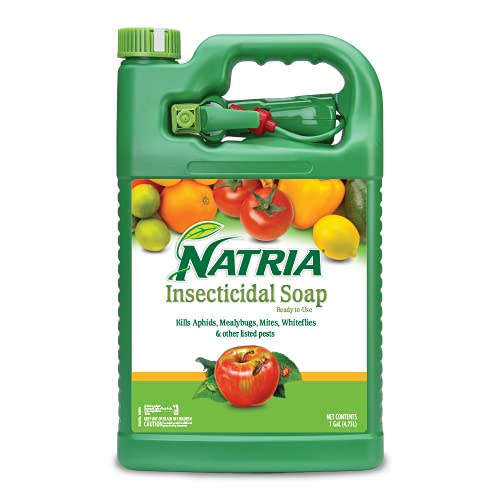
Natira offers such a product on Amazon.
Leafhoppers
Named for their tendency to jump clear of disturbed leaves, leafhoppers suck sap out of leaves, which leaves behind lightly-colored speckles, browns foliage, and lowers plant vigor over time.
On the whole, leafhoppers are slender, wedge-shaped insects that vary in color depending on the species. They also excrete honeydew, which has all those nasty side effects mentioned earlier.
Since they overwinter in plant detritus, removing such debris from the garden will help to keep them contained. It also goes without saying that you don’t want to mulch or compost with infested maple leaves.
Assassin bugs, ladybugs, and green lacewings will all consume leafhoppers. Azadirachtin or pyrethrins will provide immediate control, but these may also harm beneficial insects… choices, choices.
Scale
Whether they’re soft or armored, scale insects suck plant juices from the shoots. As they do this, these rounded and itty-bitty pests stunt growth, yellow foliage, and cause premature leaf drop. Soft scale insects will also excrete honeydew.
Scale can be mechanically scraped off by hand or with tools, and heavily infested branches can be pruned and destroyed. Ladybugs and parasitic wasps will consume scale, so avoid systemic insecticides if you choose to go this route.
But if chemical control is necessary, horticultural oil will do the trick, and solid systemic chemical options include cyfluthrin, cyhalothrin, bifenthrin, or permethrin.
Learn more about how to deal with scale in our guide.
Disease
Keeping gardening tools sterile and planting in disease-free soil will help prevent infection, but sometimes diseases strike despite our best efforts.
Canker
Cankers develop when an open wound on a plant becomes infected with bacteria or fungi.
These lesions look horribly discolored and diseased. Not a super academic description, but given how much canker appearances can vary, it’s the most universally accurate.
They’ll often ooze sap or other plant fluids, and tend to hinder growth on the branches where they’re found. Leaves discolor, curl, and wilt, while the branch as a whole will experience dieback. Not fun.
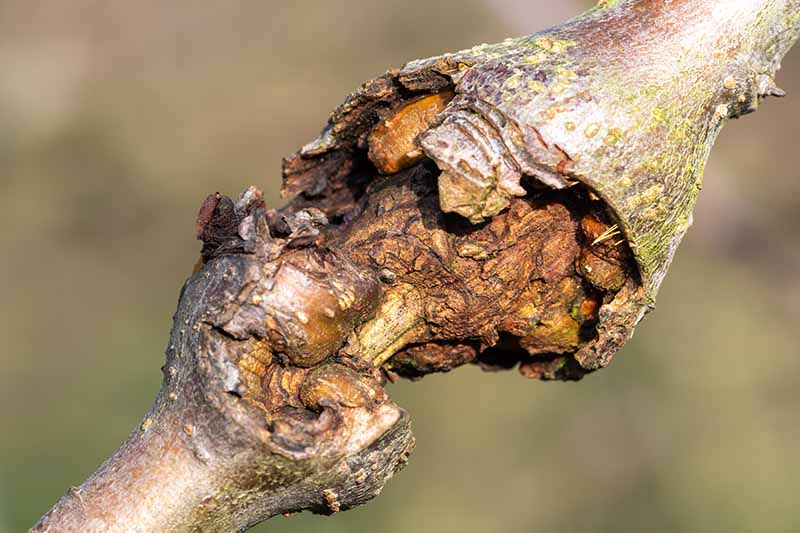
Prevention via proper cultivation is all you can really do here, along with pruning away canker-covered branches.
Make your cuts several inches behind where the lesion is located. Pruning in wet conditions can spread fungi, so avoid those marathon rainy day pruning sessions.
Don’t cut directly into a canker. For removing cankers located on the trunk, it’s best to hire a professional arborist.
Fungal Leaf Spot
A catch-all name for many different leaf spot diseases caused by fungi, fungal leaf spot results in small, darkened lesions on leaf surfaces. As the spots grow, they can merge into larger, irregularly-shaped blotches.
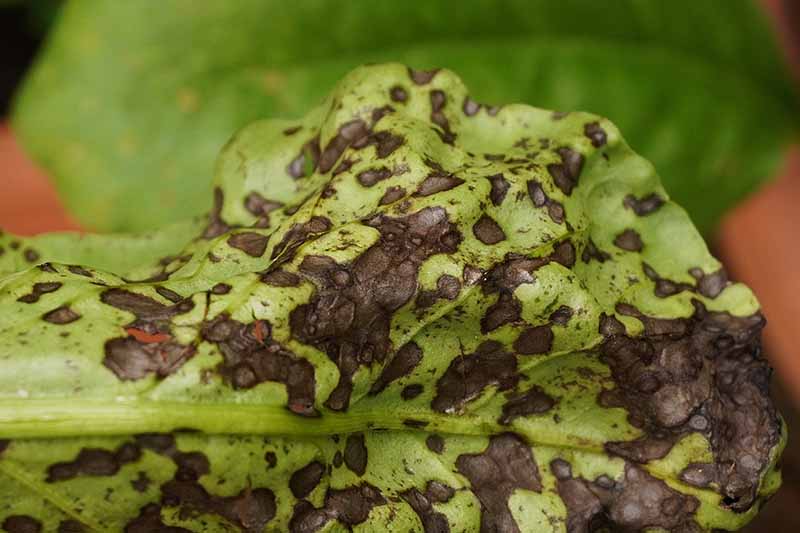
Other than causing visual blemishes and some defoliation, most leaf spot diseases aren’t a huge deal for red maples.
Collecting and destroying nearby plant detritus, pruning to increase airflow, and using fungicides can help in dealing with fungal leaf spot.
Verticillium Wilt
Caused by soilborne species of Verticillium fungi, this wilt is a very serious condition. The causal fungus can enter a plant’s roots or aboveground wounds and end up killing your red maple.

It does this by essentially clogging up the xylem, which is basically a plant’s internal plumbing that carries water from the roots to the leaves.
Streaked sapwood can be a symptom, along with chlorosis, tissue necrosis, and the eventual death of the entire tree. A professional diagnosis can come in handy for disease identification, as well.
Dead branches should be pruned, and dead trees should be removed and replaced with species that are resistant to verticillium wilt. Since the disease can persist in the soil for many years, you wouldn’t want to just try again with another red maple.
Best Uses
Ornamentally, red maples make fantastic specimens, whether they’re in the yard or planted as street trees near pavement or along a sidewalk. Their foliage provides shade and spectacular fall color, and they’re tolerant of many different cultural conditions.
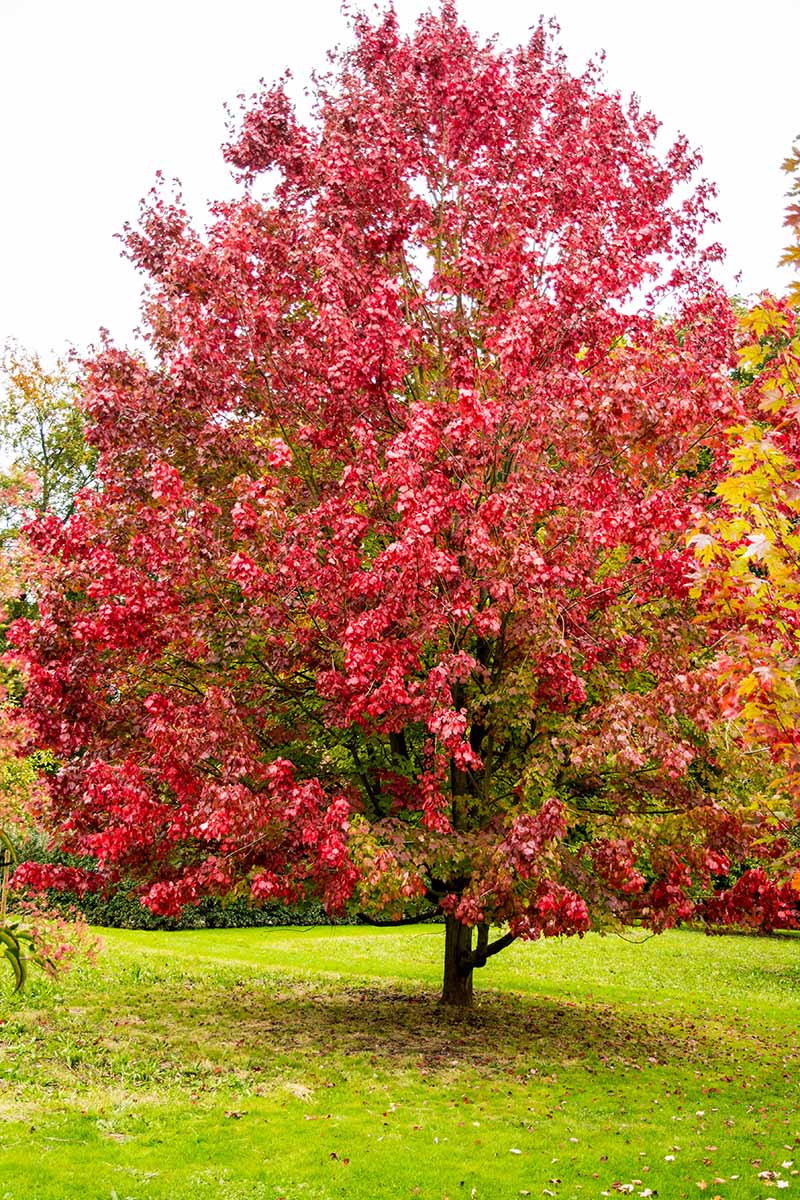
Plus, as far as seeds go, the propeller-shaped samaras are very amusing.
When they’re tossed into the air, they fall down spinning like they’re little helicopters making a landing. Anyone can get a kick out of these uniquely awesome seed capsules, no matter how old.
Quick Reference Growing Guide
| Plant Type: | Deciduous shade tree | Flower/Foliage Color: | Red / green (red or shades of yellow to red in fall) |
| Native to: | Eastern and Central North America | Tolerance: | Black walnut, compacted soil, drought, fire, heat, urban conditions, various soil textures, wet soil |
| Hardiness (USDA Zone): | 3-9 | Water Needs: | Moderate |
| Season: | Early spring | Maintenance: | Low |
| Exposure: | Full sun to partial shade | Soil Type: | Fertile, various textures |
| Time to Maturity: | 25 years | Soil pH: | 5.0-7.0 |
| Growth Rate: | Moderate | Soil Drainage: | Well-draining |
| Planting Depth: | 1/4-1 inch (seed), depth of root system (transplants) | Attracts: | Pollinators, small mammals, songbirds |
| Spacing | Width of mature spread (varies depending on variety) | Uses: | Furniture making, papermaking, shade tree, specimen, syrup, urban settings, woodworking |
| Height: | 40-120 feet, dependent on variety/conditions | Family: | Sapindaceae |
| Spread: | 30-50 feet, dependent on variety/conditions | Genus: | Acer |
| Common Pests and Disease: | Aphids, borers, caterpillars, gray squirrels, leafhoppers, scale, white-tailed deer, canker, fungal leaf spot, verticillium wilt | Species: | Rubrum |
The Red Maple: A Landscape Staple
Why should Canadians be the only ones who proudly display red maple leaves?
With a red maple tree in your yard, you’ll be able to flaunt some scarlet Acer foliage, too! And if you happen to be reading this in Canada… well, you’ll be the most patriotic person on the block!
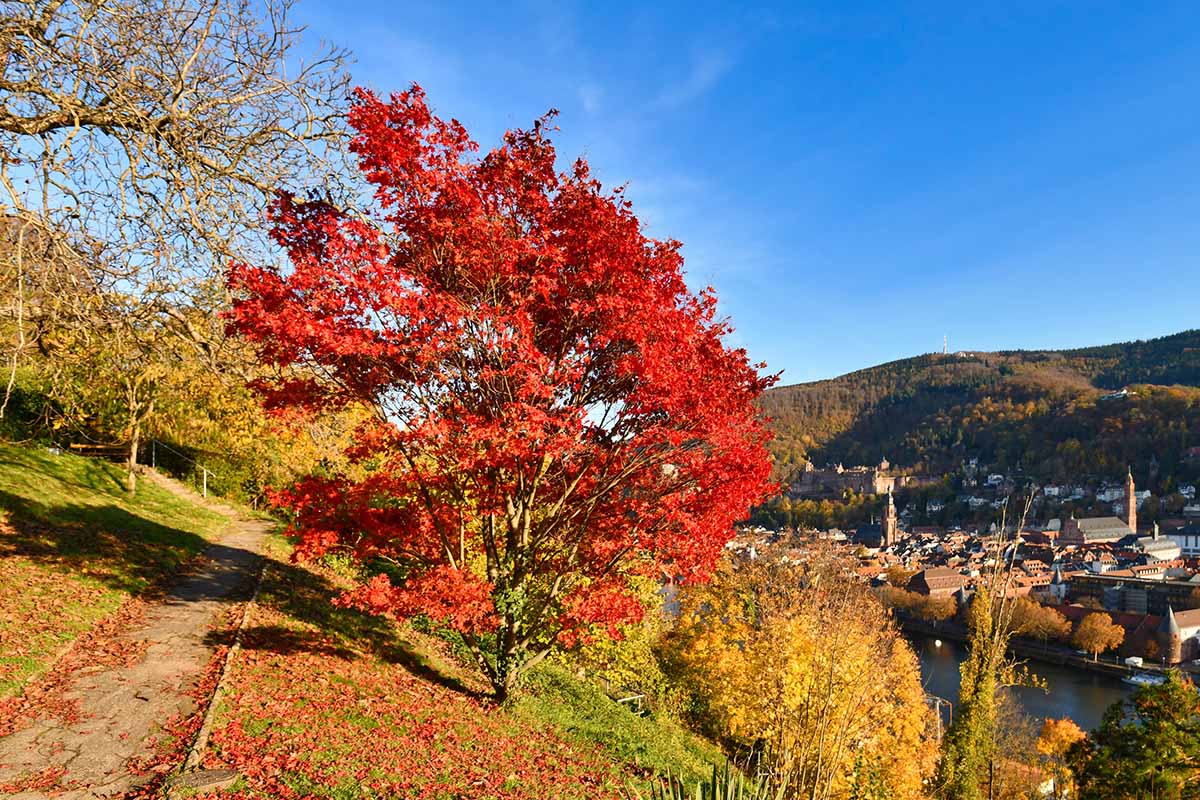
This concludes our red maple guide, so go forth and plant some seriously awesome trees, gang!
Any experiences growing red maple or questions about the process can go into the comments section below! I’d love to read and respond to them. Feel free to share your photos as well.
For more information on growing trees in your landscape, we’ve got just the guides for you:
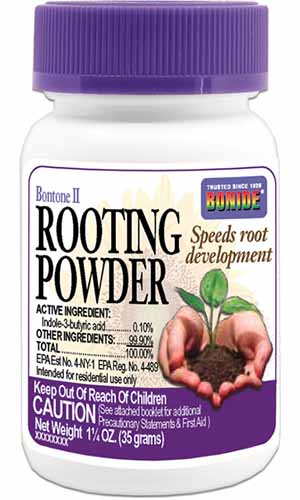
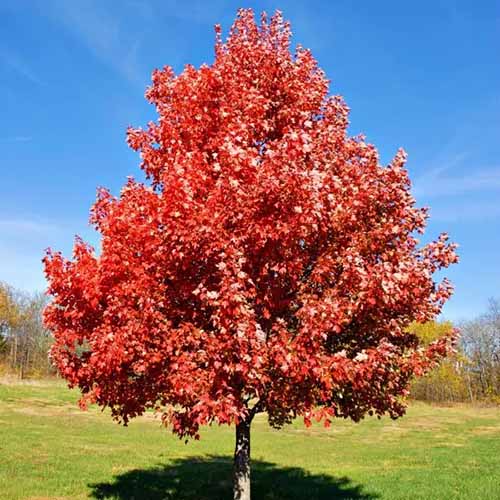

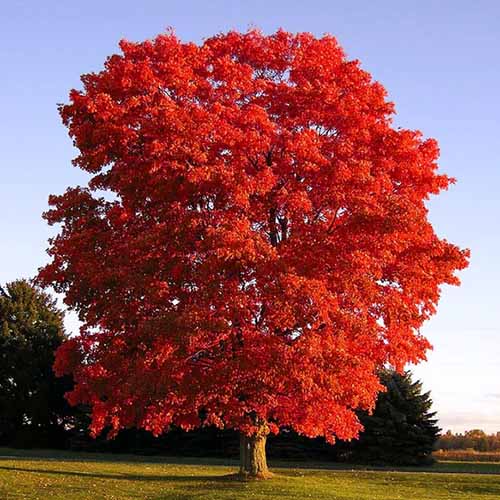

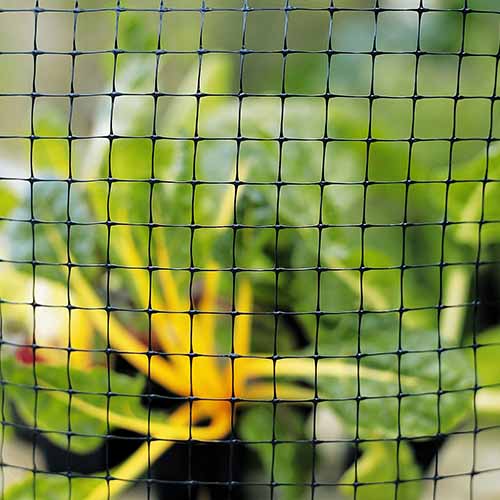
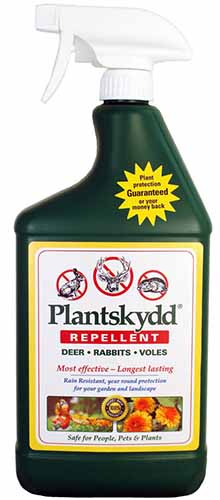
I wanted 3 red maples (Autumn Blaze) about 15 years ago. I’m afraid I’ve lost them. This spring the bark opened and the leaves above have started turning color. Is there any hope?
Hey, Richard! Sorry to hear about your maples! I guess it depends on what you want to do, honestly. If you wanted to start over with some new plants, that’s totally reasonable and understandable. But if you wanted to keep growing the Autumn Blazes that you have in the ground, then yes, I’d say there’s still hope! If you opt for the latter, then you should cut away any loose, dead bark near the openings with a sterilized blade and continue to care for the trees just like you would for any stressed plants. “Hope is a good thing, maybe… Read more »
My husband starts the red maples from seed. He put them in a pot and and half buried the pots in the garden. All three of the trees are getting pale green. They look anemic. What should he do for them? Janet Brumbaugh
How large are the trees now? If it’s not too difficult, I’d lift the trees, take them out of the pots, and just replant them sans pots. Unless the pot is biodegradeable, that seems like a recipe for eventual root bindage. If the roots currently have enough room, then it couldn’t hurt to go back to the basics. Are you in an appropriate USDA Hardiness Zone (3-9)? Are they exposed to full sun or partial shade? Do they have well-draining, rich soil with a pH of 5.0 to 7.0? Are their soils kept moderately moist? Let us know if any… Read more »
My red maple tree had some dead branches. I put some miracle grow potting soil around the base of the tree and put mulch on top of that. I also trimmed off the dead branches. I did this about three weeks ago. Now the leaves are shriveled and look like they are dying. What should I do?
Hey there, Susan! I’m sorry to hear that you’re having trouble. Is it possible that you’re plants are experiencing some drought stress? It can be common when it’s hot out and there’s not enough water.